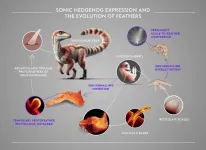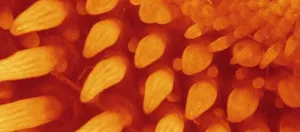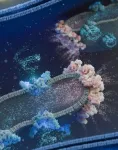(Press-News.org) Welfare measurement is among the most fundamental questions in economics. Policymakers and others use gross domestic product (GDP) as a proxy for welfare, but this application does not reflect the benefits of introducing new and free goods and services, such as digital goods, and may result in misunderstanding the economy.
In a new study, researchers developed a framework to measure the welfare contributions of new and free goods and services and quantify their benefits. By applying the framework to several examples (e.g., Facebook, Smartphone cameras), the study found that these goods and services significantly increase welfare.
The study was conducted by researchers at Carnegie Mellon University, Stanford University, the University of British Columbia, UNSW Sydney, and the Copenhagen Business School. It is published in American Economic Journal: Macroeconomics.
“Our framework provides a way to understand the benefits from new and digital goods,” explains Avinash Collis, assistant professor of management science and economics at Carnegie Mellon’s Heinz College, who led the study. “Our focus is on consumption of digital technologies by households and associated welfare gains, rather than production, which is properly the focus for conventional GDP metrics.”
New goods appear rapidly, and digital goods (e.g., information and entertainment services) are increasingly available at zero price, reflecting their low marginal costs of replication and distribution. Even when free goods have an implicit price, this price is not usually observed and measured. Thus, the benefits from the positive quantities of these digital goods that are consumed are underreported in the conventional national accounts even if they create considerable consumption value for consumers.
Relatedly, assessing the welfare contributions of new goods is challenging since there is no observed price for the period before they appear. Despite the increasing relevance of new and free goods, their value to consumers is not properly reflected in standard statistical agency reports for GDP or derivative metrics like productivity, which are typically defined in terms of GDP.
In this study, researchers developed a new metric, GDP-B, to capture the benefits associated with new and free goods and services, thus complementing GDP. To demonstrate the application of the framework, the study estimated the potential impact on welfare growth of Facebook and other popular digital apps, as well as improvements in Smartphones (especially cameras) from 2004 to 2017, based on an experiment that used a representative sample of the U.S. Internet population.
Incorporating Facebook into GDP-B added 0.05 to 0.11 percentage points per year from 2004, and additions to GDP-B generated by other digital goods were also estimated as significant. In addition, the study’s experiment with Smartphone cameras suggests that this technology would add 0.63 percentage points per year to GDP-B. These high valuations for digital goods have not been recognized by conventional approaches, say the authors.
The framework used in this study is applicable not only to digital goods but also to conventional goods (e.g., breakfast cereal, jet travel), some of which have significantly higher or lower contributions to welfare than might be inferred from expenditures alone. The framework might also be expanded to non-market goods (e.g., government mandates, COVID-19 tests), ultimately providing a more comprehensive and meaningful measure of welfare changes.
“We used our framework to explore more thoroughly the impacts of new and free goods and services on welfare,” says Erik Brynjolfsson, professor and director of the Digital Economy Lab at Stanford University’s Institute for Human-Centered Artificial Intelligence, who coauthored the study. “In doing so, we inform the debate regarding the potential of the digital economy to generate productivity, economic growth, and welfare gains, and the paradox implicit in the gap between the rise of the digital economy and stagnating productivity as conventionally measured.”
The study was funded by the Stanford Digital Economy Lab, the MIT Initiative on the Digital Economy, the Social Sciences and Humanities Research Council of Canada, and the Australian Research Council.
END
New framework to measure economic well-being considers new and free goods and services; addition of digital goods boosts growth
2025-03-20
ELSE PRESS RELEASES FROM THIS DATE:
Augmented reality guidance for placing intracranial drains now clinically validated
2025-03-20
March 20, 2025 — Placing an external ventricular drain (EVD) at bedside using augmented reality (AR) guidance is more precise than freehand placement and is associated with fewer reinterventions and complications, according to a clinical pilot study of a novel system. Frederick Van Gestel, MD, a neurosurgery resident at Universitair Ziekenhuis Brussel and PhD researcher at Vrije Universiteit Brussel in Brussels, Belgium, and colleagues report first-in-human results in Neurosurgery, the official publication of the Congress ...
How feathers develop in chickens
2025-03-20
Inhibiting the sonic hedgehog (Shh) pathway strongly perturbs feather development in chickens by restricting feather bud outgrowth, invagination and branching, according to a study published March 20th, in the open-access journal PLOS Biology by Rory Cooper and Michel Milinkovitch from the University of Geneva, Switzerland.
Avian feathers are intricate appendages whose forms vary substantially across species and body areas, and between juvenile and adult stages. Understanding both the developmental and evolutionary mechanisms underpinning this morphological diversity has long fascinated biologists. The morphological intricacies ...
Insomniac fruit fly mutants show enhanced memory despite severe sleep loss
2025-03-20
Fruit fly mutants that have severe sleep deficits perform better at olfactory learning and memory tasks, according to a study published March 20th in the open-access journal PLOS Biology by Sheng Huang and Stephan Sigrist from Freie Universität Berlin, Germany, and colleagues. The paradox of enhanced memory despite sleep loss could be explained by protein kinase A (PKA) signaling in the mushroom body of the fly brain.
Sleep is a dynamic process conserved from invertebrates to mammals and humans. Although sleep is thought to serve many purposes, it is often studied for its restorative roles, which ...
Seals can sense their own circulating blood oxygen and it keeps them from drowning
2025-03-20
Marine mammals may have a secret weapon to survive long dives – an ability to directly sense their own circulating blood-oxygen levels that most mammals lack – allowing them to stay submerged longer and resurface before hypoxia leads to drowning, researchers report. Air-breathing marine mammals have developed a range of physiological adaptations to survive in aquatic environments, including thermoregulation to endure the pressures of the deep. However, one of the most critical evolutionary challenges for diving mammals is avoiding drowning. Despite adaptations for larger oxygen storage and tolerance to low oxygen levels, these animals still risk drowning if they ...
Infants encode short-lived hippocampal memories
2025-03-20
Challenging assumptions about infant memory, a novel functional magnetic resonance imaging (fMRI) study shows that babies as young as 12 months old can encode memories, researchers report. The findings suggest that infantile amnesia – the inability to remember our first few years of life – is more likely caused by memory retrieval failures rather than an inability to form memories in the first place. Despite infancy being a period of rapid learning, memories from this time do not persist into later childhood or adulthood. In ...
Mountain uplift and dynamic topography shapes biodiversity over deep time
2025-03-20
Rising mountains do more than reshape the landscape – they also drive evolutionary change, according to a new study. By simulating millions of years of tectonic uplift, researchers have uncovered a link between mountain building and biodiversity, shedding light on how Earth’s dynamic topography shapes biodiversity over deep time. Mountain ranges are widely recognized as global hotspots of terrestrial biodiversity yet only cover a relatively small proportion of the Earth’s surface, suggesting a strong connection between topographic evolution and species diversity. Mountainous terrain can promote speciation by isolating populations, ...
Majority of carbon sequestered on land is locked in nonliving carbon reservoirs
2025-03-20
Challenging long-held assumptions about global terrestrial carbon storage, a new study finds that the majority of carbon dioxide (CO2) absorbed by ecosystems has been locked away in dead plant material, soils, and sediments, rather than living biomass, researchers report. These new insights, which suggest that terrestrial carbon stocks are more resilient and stable than previously appreciated, are crucial for shaping future climate mitigation strategies and optimizing carbon sequestration efforts. Recent studies have shown that terrestrial carbon stocks are increasing, offsetting ...
From dinosaurs to birds: the origins of feather formation
2025-03-20
Feathers are among the most complex cutaneous appendages in the animal kingdom. While their evolutionary origin has been widely debated, paleontological discoveries and developmental biology studies suggest that feathers evolved from simple structures known as proto-feathers. These primitive structures, composed of a single tubular filament, emerged around 200 million years ago in certain dinosaurs. Paleontologists continue to discuss the possibility of their even earlier presence in the common ancestor of dinosaurs and pterosaurs (the first flying vertebrates with membranous wings) around 240 million years ago.
Proto-feathers are ...
Why don’t we remember being a baby? New study provides clues
2025-03-20
Though we learn so much during our first years of life, we can’t, as adults, remember specific events from that time. Researchers have long believed we don’t hold onto these experiences because the part of the brain responsible for saving memories — the hippocampus — is still developing well into adolescence and just can’t encode memories in our earliest years. But new Yale research finds evidence that’s not the case.
In a study, Yale researchers showed infants ...
The cell’s powerhouses: Molecular machines enable efficient energy production
2025-03-20
Mitochondria are the powerhouses in our cells, producing the energy for all vital processes. Using cryo-electron tomography, researchers at the University of Basel, Switzerland, have now gained insight into the architecture of mitochondria at unprecedented resolution. They discovered that the proteins responsible for energy generation assemble into large “supercomplexes”, which play a crucial role in providing the cell’s energy.
Most living organisms on our planet-whether plants, animals, or ...



